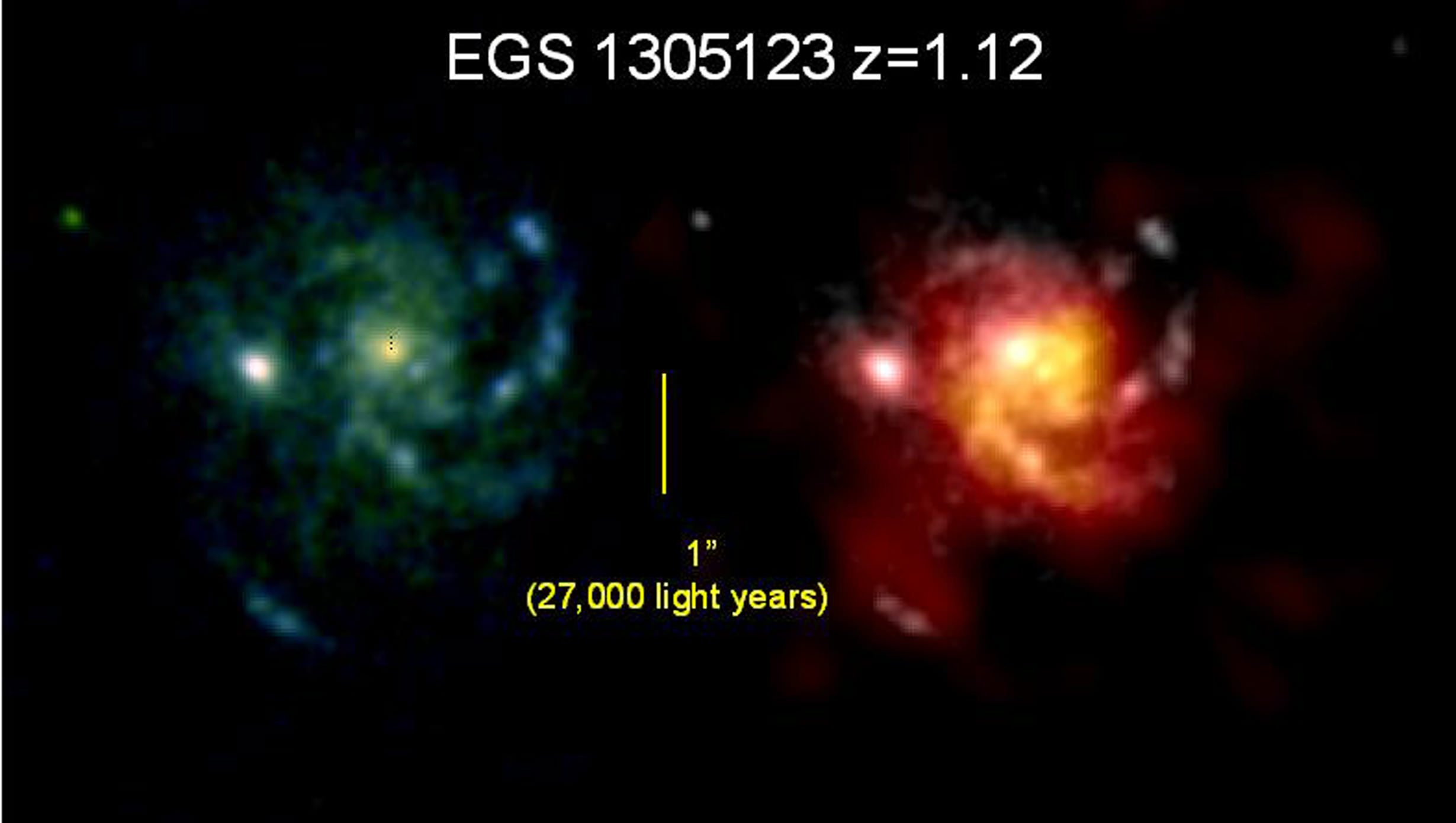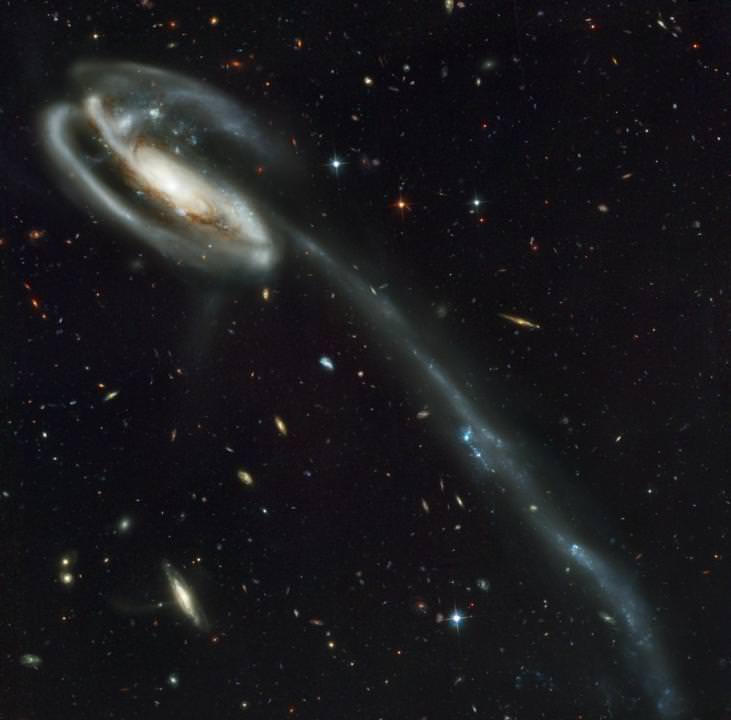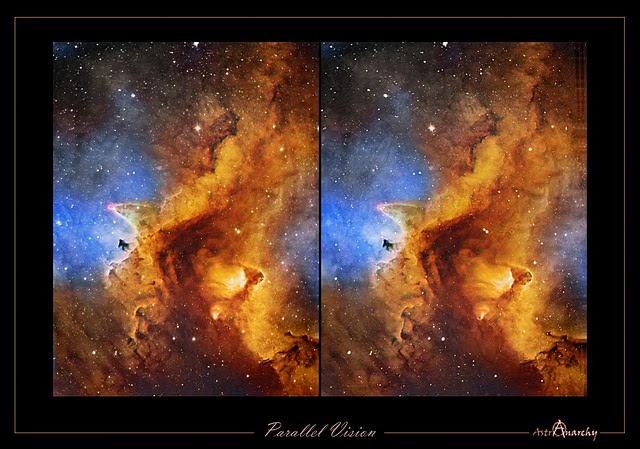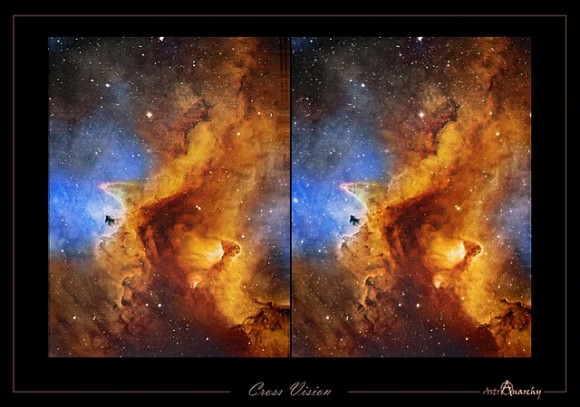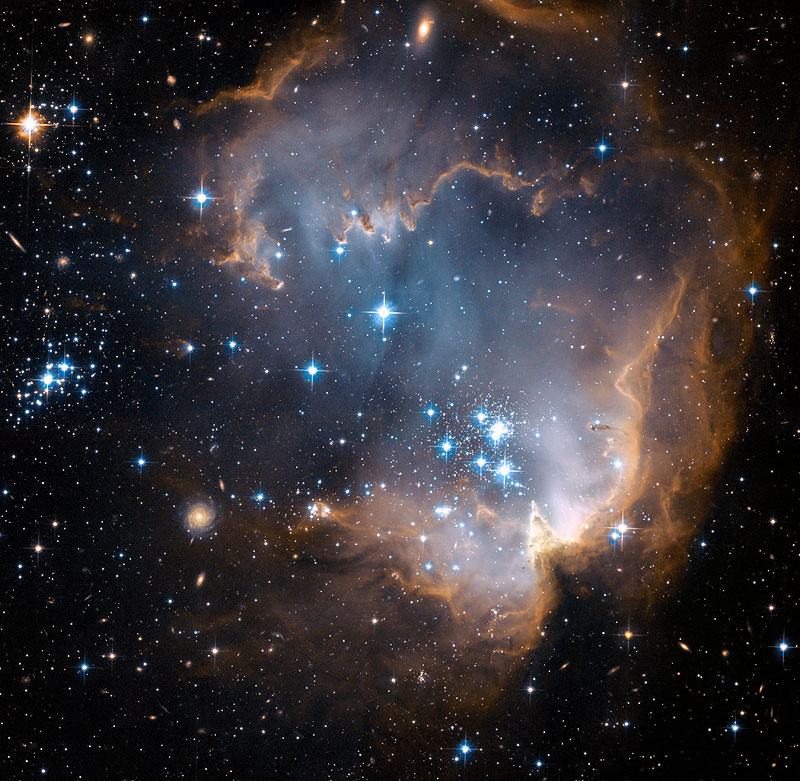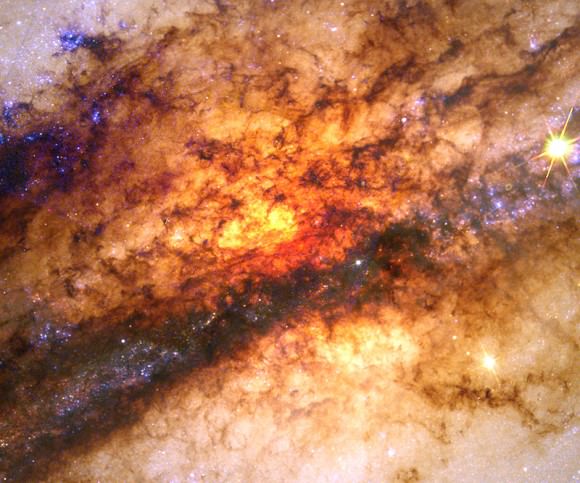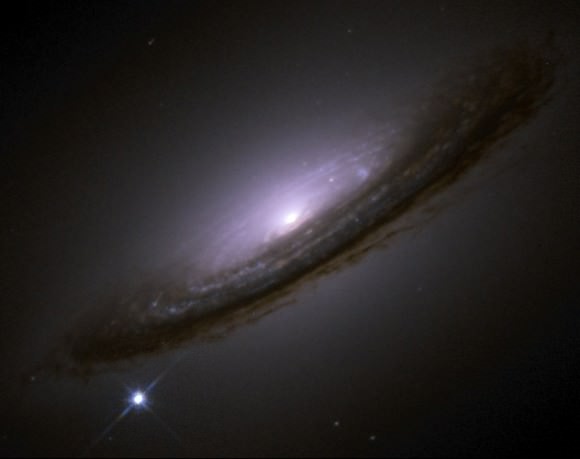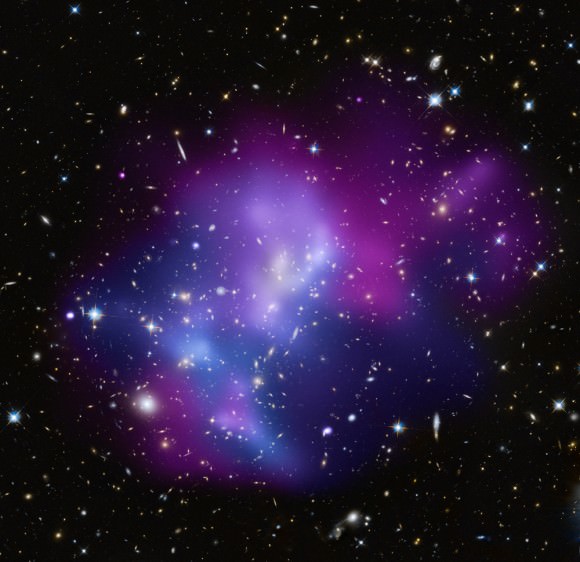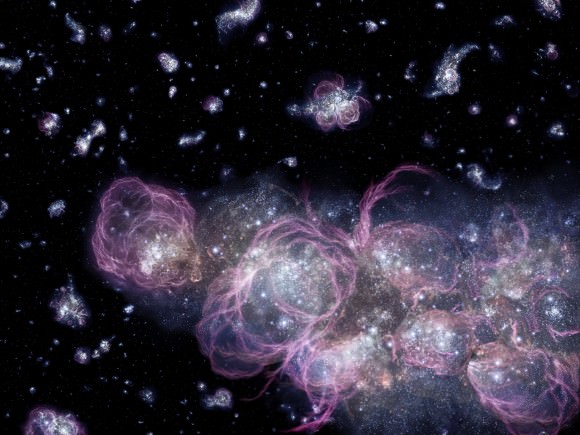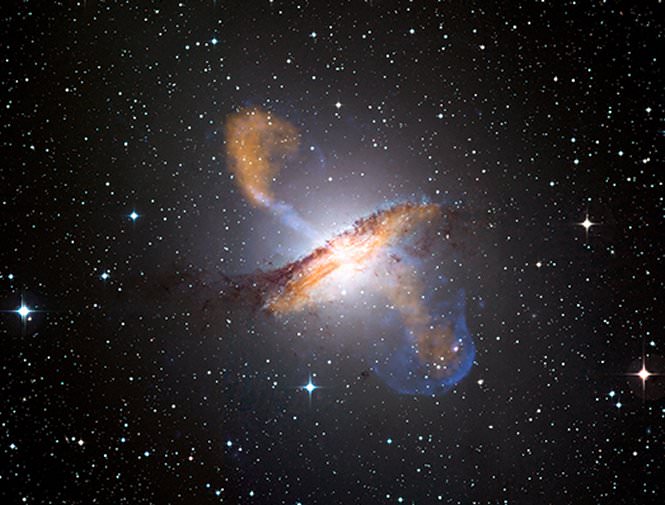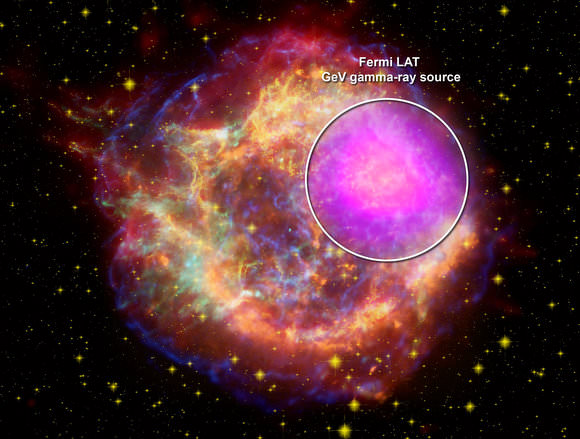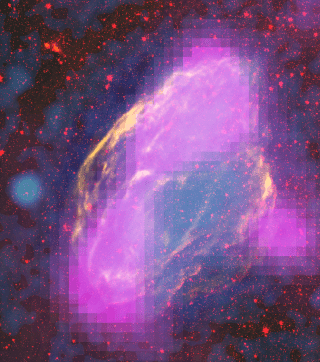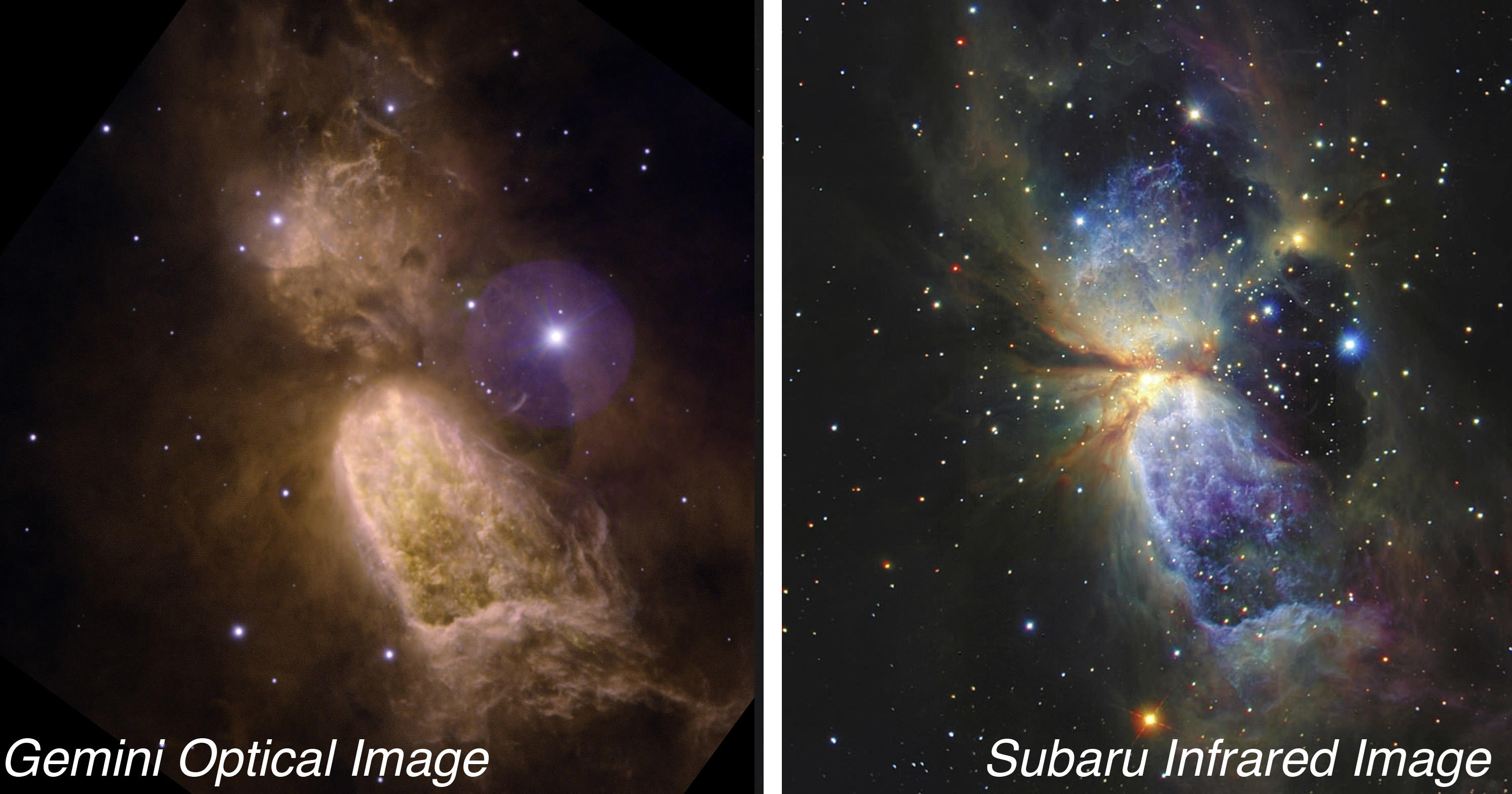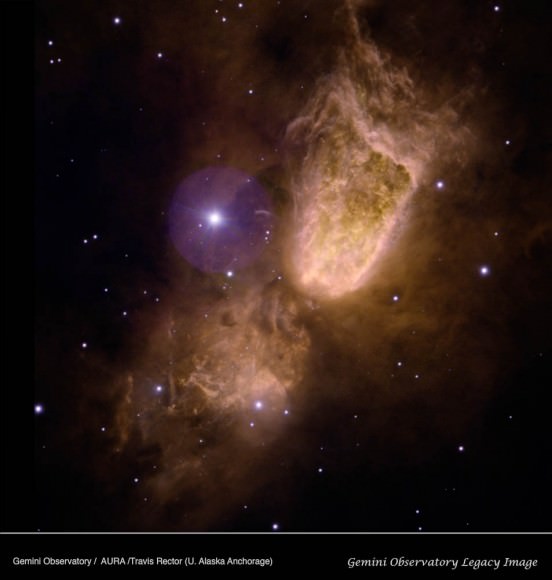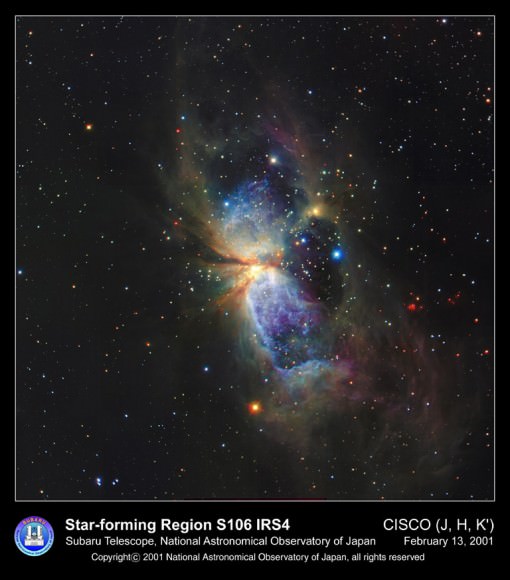[/caption]
Galaxies long, long ago were very fecund; they gave birth to stars at a rate at least ten times what we see today.
Why? Was there more stuff around then, to make stars? Or were galaxies back then more efficient at star-making? Or something else??
Dr. Linda Tacconi, from Germany’s Max-Planck-Institut für extraterrestrische Physik, led an international team of astronomers to find out why … and the answer seems to be that young galaxies were stuffed to the gills with gas.
“We have been able, for the first time, to detect and image the cold molecular gas in normal star forming galaxies, which are representative of the typical massive galaxy populations shortly after the Big Bang,” said Dr Tacconi.
The challenging observations yield the first glimpse how galaxies, or more precisely the cold gas in these galaxies, looked a mere 3 to 5 billion years after the Big Bang (equivalent to a cosmological redshift z~2 to z~1). At this age, galaxies seem to have formed stars more or less continuously with at least ten times the rate seen in similar mass systems in the local Universe.
It is now reasonably well-established that galaxies formed from proto-galaxies, which themselves formed in local over-densities, dominated by cold dark matter – dark matter halos – where the newly neutral hydrogen and helium collected and cooled. Through collisions and mergers, and some on-going gas accretion, the proto-galaxies formed young galaxies, a few billion years after the Big Bang – in short, hierarchical formation.
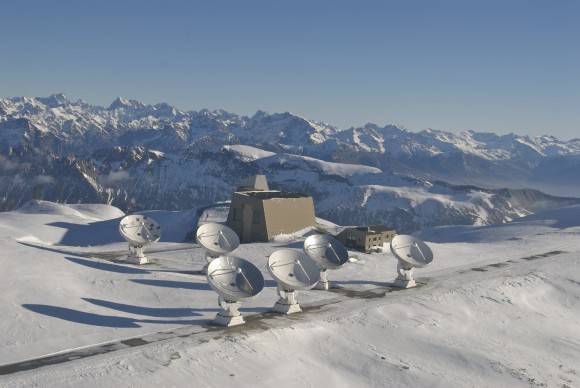
Detailed observations of the cold gas and its distribution and dynamics hold a key role in disentangling the complex mechanisms responsible for turning the first proto-galaxies into modern galaxies, such as the Milky-Way. A major study of distant, luminous star forming galaxies at the Plateau de Bure millimeter interferometer has now resulted in a breakthrough by having a direct look at the star formation “food”. The study took advantage of major recent advances in the sensitivity of the radiometers at the observatory to make the first systematic survey of cold gas properties (traced by a rotational line of the carbon monoxide molecule) of normal massive galaxies when the Universe was 40% (z=1.2) and 24% (z=2.3) of its current age. Previous observations were largely restricted to rare, very luminous objects, including galaxy mergers and quasars. The new study instead traces massive star forming galaxies representative of the ‘normal’, average galaxy population in this mass and redshift range.
“When we started the programme about a year ago”, says Dr. Tacconi, “we could not be sure that we would even detect anything. But the observations were successful beyond our most optimistic hopes. We have been able to demonstrate that massive normal galaxies at z~1.2 and z~2.3 had five to ten times more gas than what we see in the local Universe. Given that these galaxies were forming gas at a high rate over long periods of time, this means that gas must have been continuously replenished by accretion from the dark matter halos, in excellent agreement with recent theoretical work.”
Another important result of these observations is the first spatially resolved images of the cold gas distribution and motions in several of the galaxies. “This survey has opened the door for an entirely new avenue of studying the evolution of galaxies,” says Pierre Cox, the director of IRAM. “This is really exciting and there is much more to come.”
“These fascinating findings provide us with important clues and constraints for next-generation theoretical models that we will use to study the early phases of galaxy development in more detail,” says Andreas Burkert, specialist for star formation and the evolution of galaxies at Germany’s Excellence Cluster Universe. “Eventually these results will help to understand the origin and the development of our Milky Way.”
About the EGS 1305123 image: Spatially resolved optical and millimeter images of a typical massive galaxy at redshift z=1.1 (5.5 billion years after the Big Bang). The left image was taken with the Hubble Space Telescope in the V- and I-optical bands, as part of the AEGIS survey of distant galaxies. The right image is an overlay of the CO 3-2 emission observed with the PdBI (red/yellow colors) superposed on the I-image (grey). For the first time these observations clearly show that the molecular line emission and the optical light from massive stars trace a massive, rotating disk of diameter ~60,000 light years. This disk is similar in size and structure as seen in z~0 disk galaxies, such as the Milky Way. However, the mass of cold gas is in this disk is about an order of magnitude larger than in typical z~0 disk galaxies. This explains why high-z galaxies can form continuously at about ten times the rate of typical z~0 galaxies.
Sources: Max Planck Institute for Extraterrestrial Physics, Tacconi et al. (2010), Nature 463, 781 (preprint: arXiv:1002.2149)

